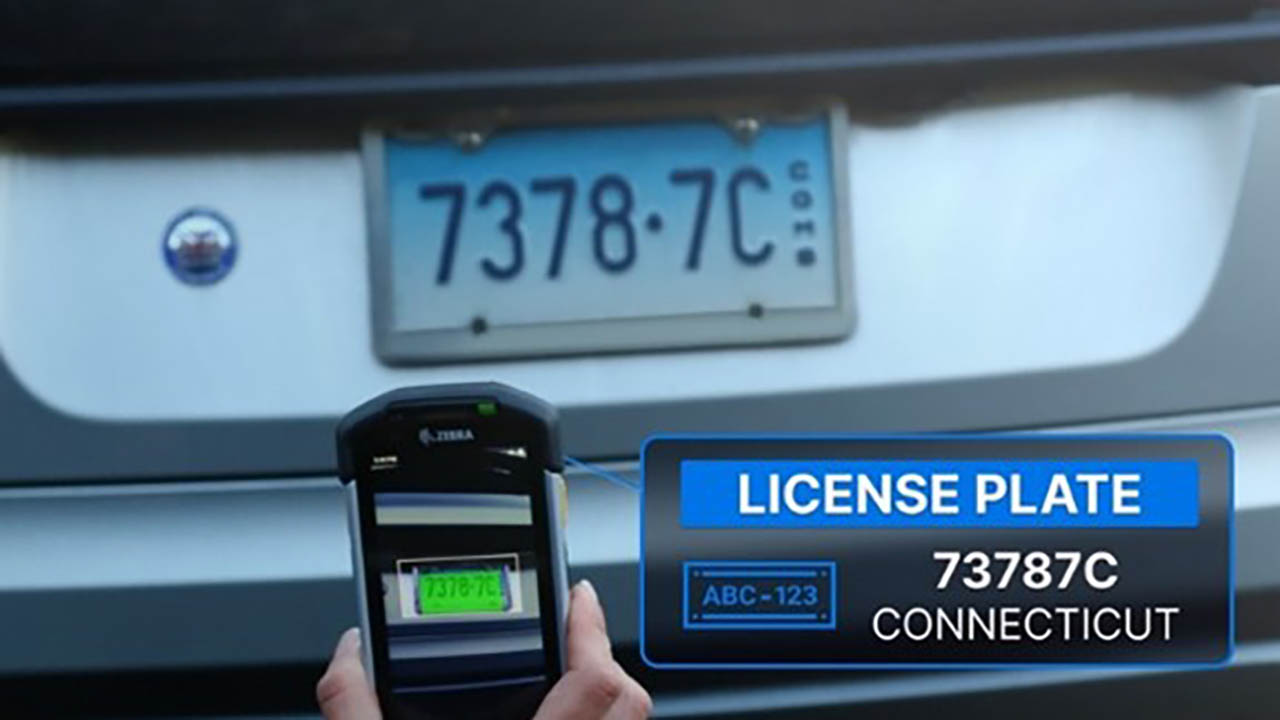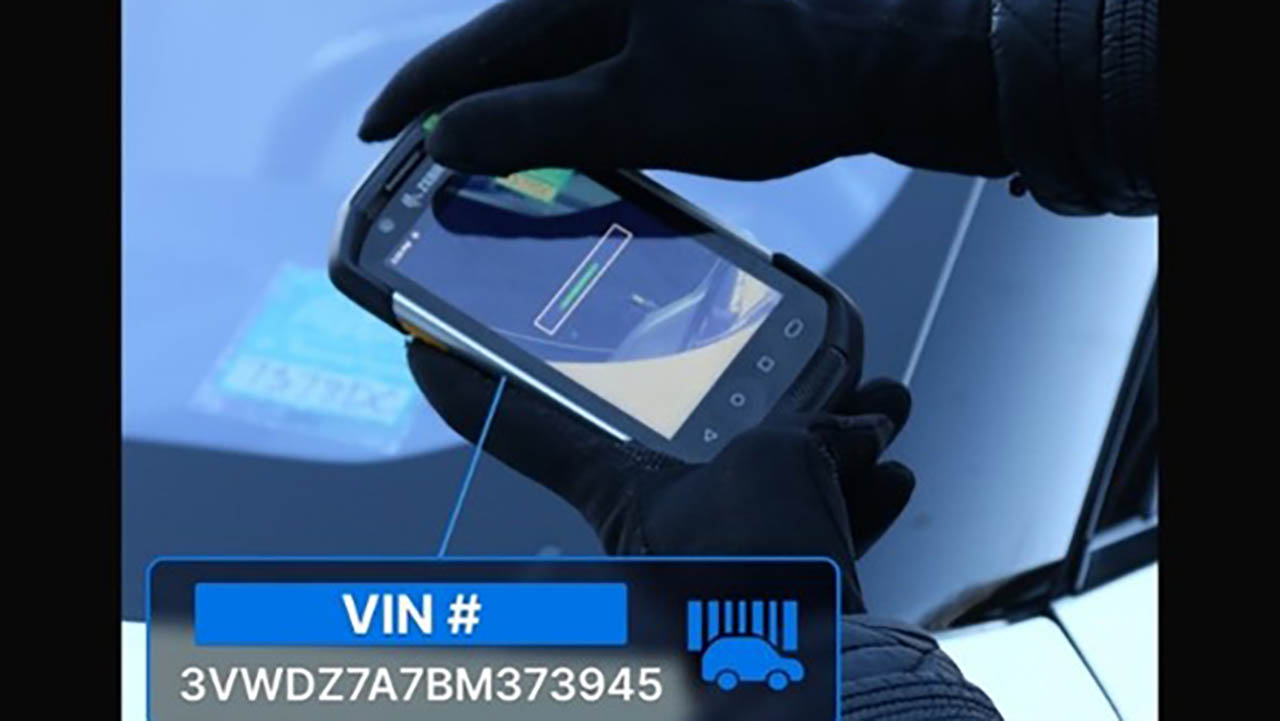Transform retail operations with Zebra’s retail technology solutions, featuring hardware and software for improving inventory management and empowering teams.
Streamline operations with Zebra’s healthcare technology solutions, featuring hardware and software to improve staff collaboration and optimise workflows.
Enhance processes with Zebra’s manufacturing technology solutions, featuring hardware and software for automation, data analysis, and factory connectivity.
Zebra’s transportation and logistics technology solutions feature hardware and software for enhancing route planning, visibility, and automating processes.
Zebra's public sector technology solutions enhance decision-making, streamline operations, and safeguard communities with advanced software and rugged hardware.
Zebra's hospitality technology solutions equip your hotel and restaurant staff to deliver superior customer and guest service through inventory tracking and more.
Zebra's market-leading solutions and products improve customer satisfaction with a lower cost per interaction by keeping service representatives connected with colleagues, customers, management and the tools they use to satisfy customers across the supply chain.
Empower your field workers with purpose-driven mobile technology solutions to help them capture and share critical data in any environment.
Zebra's range of mobile computers equip your workforce with the devices they need from handhelds and tablets to wearables and vehicle-mounted computers.
Zebra's desktop, mobile, industrial, and portable printers for barcode labels, receipts, RFID tags and cards give you smarter ways to track and manage assets.
Zebra's 1D and 2D corded and cordless barcode scanners anticipate any scanning challenge in a variety of environments, whether retail, healthcare, T&L or manufacturing.
Zebra's extensive range of RAIN RFID readers, antennas, and printers give you consistent and accurate tracking.
Choose Zebra's reliable barcode, RFID and card supplies carefully selected to ensure high performance, print quality, durability and readability.
Zebra's rugged tablets and 2-in-1 laptops are thin and lightweight, yet rugged to work wherever you do on familiar and easy-to-use Windows or Android OS.
With Zebra's family of fixed industrial scanners and machine vision technologies, you can tailor your solutions to your environment and applications.
Zebra’s line of kiosks can meet any self-service or digital signage need, from checking prices and stock on an in-aisle store kiosk to fully-featured kiosks that can be deployed on the wall, counter, desktop or floor in a retail store, hotel, airport check-in gate, physician’s office, local government office and more.
Adapt to market shifts, enhance worker productivity and secure long-term growth with AMRs. Deploy, redeploy and optimize autonomous mobile robots with ease.
Discover Zebra’s range of accessories from chargers, communication cables to cases to help you customise your mobile device for optimal efficiency.
Zebra's environmental sensors monitor temperature-sensitive products, offering data insights on environmental conditions across industry applications.
Zebra's location technologies provide real-time tracking for your organisation to better manage and optimise your critical assets and create more efficient workflows.
Enhance frontline operations with Zebra’s AI software solutions, which optimize workflows, streamline processes, and simplify tasks for improved business outcomes.
Empower your frontline with Zebra Companion AI, offering instant, tailored insights and support to streamline operations and enhance productivity.
The everything you need to rapidly and cost effectively develop high-performance AI vision applications on Zebra mobile computers.
Zebra Workcloud, enterprise software solutions boost efficiency, cut costs, improve inventory management, simplify communication and optimize resources.
Keep labour costs low, your talent happy and your organisation compliant. Create an agile operation that can navigate unexpected schedule changes and customer demand to drive sales, satisfy customers and improve your bottom line.
Drive successful enterprise collaboration with prioritized task notifications and improved communication capabilities for easier team collaboration.
Get full visibility of your inventory and automatically pinpoint leaks across all channels.
Reduce uncertainty when you anticipate market volatility. Predict, plan and stay agile to align inventory with shifting demand.
Drive down costs while driving up employee, security, and network performance with software designed to enhance Zebra's wireless infrastructure and mobile solutions.
Explore Zebra’s printer software to integrate, manage and monitor printers easily, maximising IT resources and minimising down time.
Make the most of every stage of your scanning journey from deployment to optimisation. Zebra's barcode scanner software lets you keep devices current and adapt them to your business needs for a stronger ROI across the full lifecycle.
RFID development, demonstration and production software and utilities help you build and manage your RFID deployments more efficiently.
RFID development, demonstration and production software and utilities help you build and manage your RFID deployments more efficiently.
Zebra DNA is the industry’s broadest suite of enterprise software that delivers an ideal experience for all during the entire lifetime of every Zebra device.
Advance your digital transformation and execute your strategic plans with the help of the right location and tracking technology.
Boost warehouse and manufacturing operations with Symmetry, an AMR software for fleet management of Autonomous Mobile Robots and streamlined automation workflows.
The Zebra Aurora suite of machine vision software enables users to solve their track-and-trace, vision inspection and industrial automation needs.
Zebra Aurora Focus brings a new level of simplicity to controlling enterprise-wide manufacturing and logistics automation solutions. With this powerful interface, it’s easy to set up, deploy and run Zebra’s Fixed Industrial Scanners and Machine Vision Smart Cameras, eliminating the need for different tools and reducing training and deployment time.
Aurora Imaging Library™, formerly Matrox Imaging Library, machine-vision software development kit (SDK) has a deep collection of tools for image capture, processing, analysis, annotation, display, and archiving. Code-level customisation starts here.
Aurora Design Assistant™, formerly Matrox Design Assistant, integrated development environment (IDE) is a flowchart-based platform for building machine vision applications, with templates to speed up development and bring solutions online quicker.
Designed for experienced programmers proficient in vision applications, Aurora Vision Library provides the same sophisticated functionality as our Aurora Vision Studio software but presented in programming language.
Aurora Vision Studio, an image processing software for machine & computer vision engineers, allows quick creation, integration & monitoring of powerful OEM vision applications.
Adding innovative tech is critical to your success, but it can be complex and disruptive. Professional Services help you accelerate adoption, and maximise productivity without affecting your workflows, business processes and finances.
Zebra's Managed Service delivers worry-free device management to ensure ultimate uptime for your Zebra Mobile Computers and Printers via dedicated experts.
Find ways you can contact Zebra Technologies’ Support, including Email and Chat, ask a technical question or initiate a Repair Request.
Zebra's Circular Economy Program helps you manage today’s challenges and plan for tomorrow with smart solutions that are good for your budget and the environment.

What Most Police Officers, Parking Enforcers, Border Agents and Other Public Safety Officials are Missing at Traffic Stops, Checkpoints and Incident Scenes
Public safety officials – especially those responsible for front-line policing – benefit from process automation as much as (if not more than) product safety officials assigned to enforce quality control and regulatory compliance measures in manufacturing and logistics environments. Yet, those who are charged with serving and protecting communities often find that no one is serving their best interests or protecting them from making mistakes when dealing with community members.
Case in point: unless your patrol and traffic control officers have access to automatic number plate recognition systems (ANPR), they’re probably forced to manually run license plates, passports, driver’s licenses, and vehicle identification numbers (VINs) during traffic stops, emergency incidents or even criminal pursuits. Those at border crossings or in charge of transit security are probably even more disconnected from who’s who. Even if CCTV cameras are installed every few metres, ID checks are still necessary. This leaves them vulnerable to potential suspects while they are heads down, typing in information, unsure of who they’re dealing with. It also sets parking enforcers and road patrol officers up to incorrectly identify vehicles and drivers due to typos. The result? A suspect could accidentally be released at the scene, or an innocent party could be accidentally taken in for suspicion of a crime due to mistaken or unverifiable identity.
From a ticketing perspective, violations could be assigned to the wrong tag/driver’s license leading to accusations against the wrong person. This creates a frustrating and prolonged follow-up process for both agencies and the citizens impacted. Even more frustrating are the delays caused when officers have to manually input every detail of every incident, whether a traffic stop, victim/witness encounter, or report of suspicious or criminal activity. The more time spent typing in – or retyping incorrectly input – data, the less time they are available to help others.
I often draw parallels to healthcare in these scenarios. The potential consequences of incorrectly identifying a patient before a procedure or medication administration are frightening. It’s even scarier that action could be taken without even attempting to confirm who the person is first. Likewise, when nurses are bogged down with manual data entry or verification, they find themselves with very little time to be spent at patients’ bedsides where they are most valuable and needed.
So, I wanted to quickly bring your attention to optical character recognition (OCR) technology and the benefits it could provide to officers and residents in your jurisdiction.
I know OCR technology is not new, and you may have even written it off a long time ago. (No pun intended). But like all technology, OCR has matured quickly in recent years, and you can do some interesting things with it these days that I don’t think many in the public safety community have seen yet. For example, when I ask front-line officers who use Zebra mobile computers how they like the OCR Wedge tool for automating driver’s license reads, they give me this look like, “What are you talking about?” Many are still having to manually key in every digit in their vehicle-mounted computers. Yet, capturing driver’s license info and running license plates has become as simple as taking a picture on a mobile computer.
Something else that’s new and noteworthy is the speed and cost of deploying this type of technology. It doesn’t require a lengthy waterfall project or extensive IT involvement like in the past.
If your officers are using Zebra Android™ mobile computers or rugged tablets, that means they have MobilityDNA software on their devices already – and access to OCR Wedge, which is the tool they would use to read driver’s licenses, license plates and VINs. All you need to do is sign up for a one or two-year license to turn on the tool and then choose the configuration(s) they need.
From there, all officers need to do is point and center the device camera on the text they want to capture, and OCR Wedge will bring it into the system for them almost instantaneously. It can be used to:
Automatically read driver’s licenses, government-issued ID cards, and license plates in many jurisdictions throughout the U.S. and Europe then retrieve/correlate with available records and initiate reports. (This is an ideal tool for jurisdictions not using ANPR.)
Automate update fleet vehicle records, confirm fleet vehicle status, and help initiate maintenance actions.
Confirm vehicle ownership using the VIN, which is ideal in stolen vehicle recovery efforts or even when handling abandoned vehicles, parking violations and more.
Officers don’t have to worry about finding Wi-Fi or cellular connections, either, as this particular OCR engine works 100% offline. I’m sure that’s good news if your officers are constantly working in rural or dense urban areas. And because there is no cloud processing involved, IT doesn’t have to get overly involved once the license is purchased and configurations complete.
If this seems too good (or simple) to be true, it’s not. We’ve just reached a tipping point in technology advancement where it’s hard to see the downside of this technology. Now, full disclosure, this is not a globally available tool yet. But if you’re in Europe, the U.S., Canada, Australia, or New Zealand, you can rollout these capabilities today to automate driver’s license reading. It can also be used to read national/resident ID cards in many parts of Europe, the U.S. and Mexico.
You can also use OCR Wedge to read one and two-line license plates in many European Union countries and U.S. states as long as there’s a width-height ratio of at least 1:1 and uses dark text on brighter backgrounds. Even if you have ANPR, this could be used as a secondary verification tool. Here’s what the experience would be like for officers:

Additionally, VINs can be read on the windshield or paper (such as an insurance card) as long as they are presented as a single line composed of 17 characters (horizontal or vertical) adhering to ISO3779. OCR Wedge also offers symbol support for A-Z, 0-9 (latin characters only). Here’s how it works:

Now, I have two bits of extra good news:
MRZ Zones of Passports, Visas and other ID cards are already supported through existing DataWedge OCR-A/OCR-B support on Zebra Android devices, so you don’t need to pay for a license to gain those automated data capture capabilities. Whether you’re a border agent or transport police, you can ID travelers quickly to avoid long queues and passage delays.
You can test these OCR Wedge configurations via the pre-installed Zebra DWDemo app on your Zebra Android device(s); no license is required.
If you want to test this out in your application, just contact your Zebra Account Manager to get a 90-day trial license.
Of course, if you have any questions about how to configure or maximize OCR Wedge, your account manager can help. Though, this video will show you just how simple it is to set up and get started:

Oliver Ledgard
Oliver Ledgard joined Zebra in 2017 and is currently the EMEA Government and Public Safety Lead at Zebra where he is responsible for focusing on mobile digitisation, critical communication and asset visibility solutions into Government entities to help drive efficiencies and connectivity for their workforces. Previously, Oliver was responsible for driving the tablet portfolio sales in EMEA and joined the EMEA Strategy team in 2023, in which he assumed his current role.
Oliver has more than 20 years of experience within the mobile computing and carrier industry having worked for Panasonic and Telefonica prior to Zebra. He holds a bachelor’s degree in Business Studies from Solent University in England.
Zebra Developer Blog
Zebra Developer BlogZebra Developer Blog
Are you a Zebra Developer? Find more technical discussions on our Developer Portal blog.
Zebra Story Hub
Zebra Story HubZebra Story Hub
Looking for more expert insights? Visit the Zebra Story Hub for more interviews, news, and industry trend analysis.
Search the Blog
Search the BlogSearch the Blog
Use the below link to search all of our blog posts.
Most Recent
Legal Terms of Use Privacy Policy Supply Chain Transparency
ZEBRA and the stylized Zebra head are trademarks of Zebra Technologies Corp., registered in many jurisdictions worldwide. All other trademarks are the property of their respective owners. Note: Some content or images on zebra.com may have been generated in whole or in part by AI. ©2025 Zebra Technologies Corp. and/or its affiliates.




